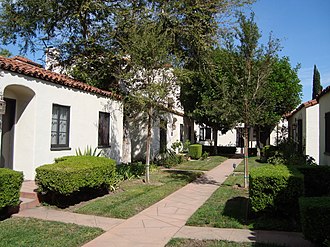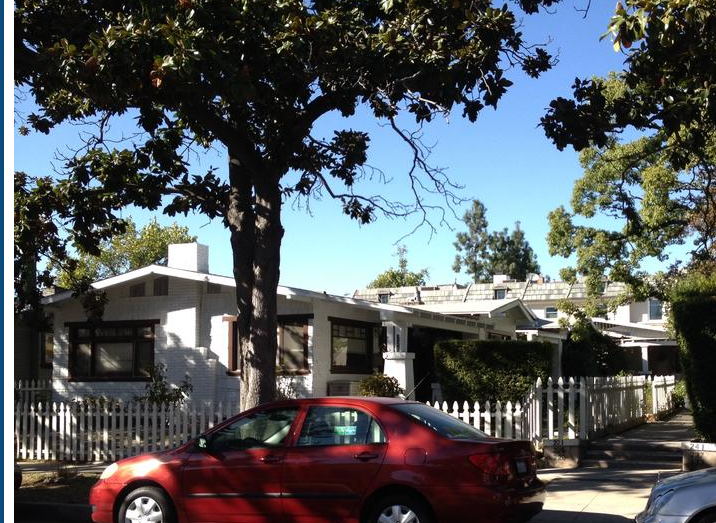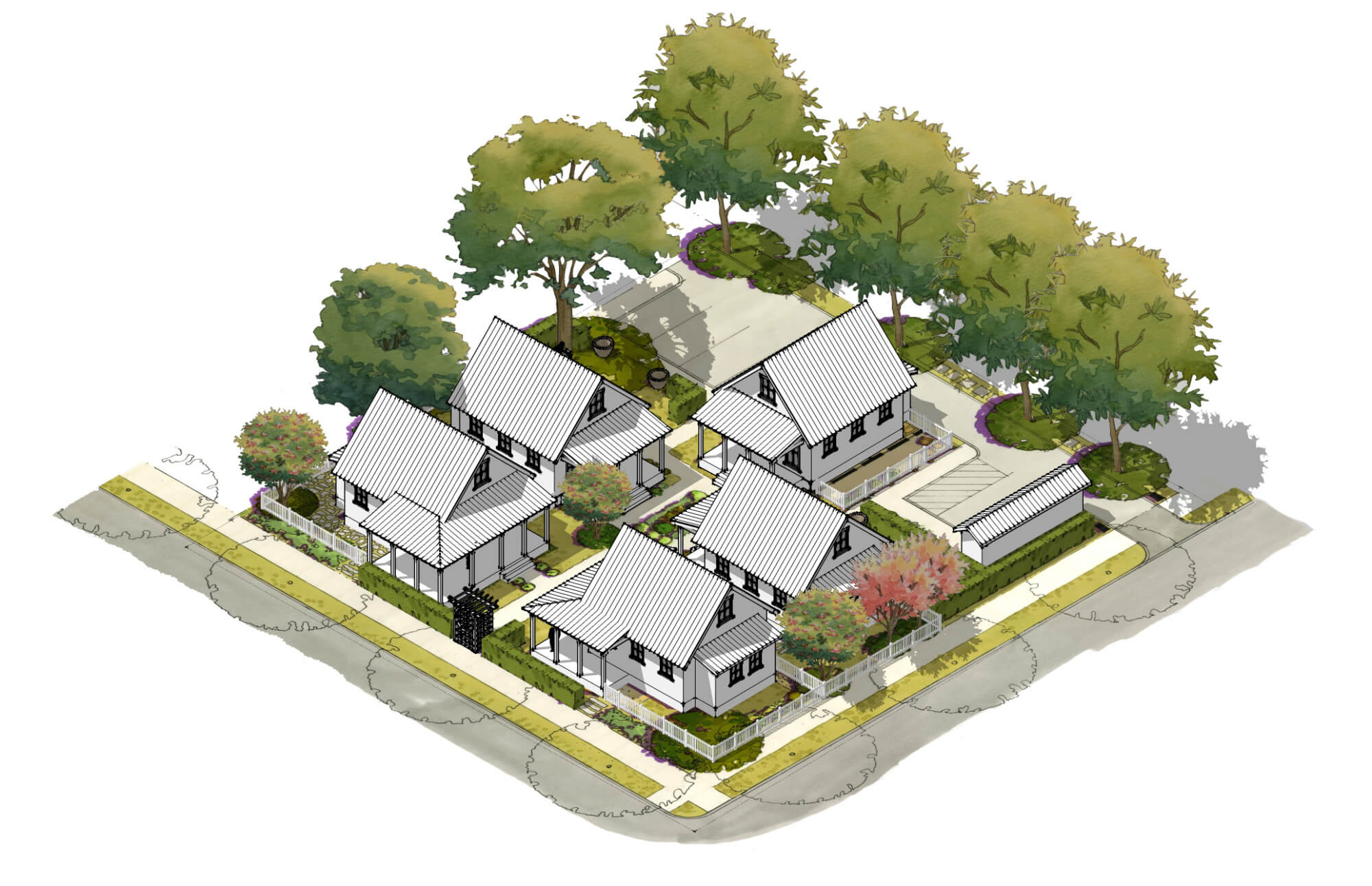The Historic Charm of Bungalow Courts in Pasadena
Pasadena, California, is well known for its rich architectural heritage, and one of its most beloved contributions to residential design is the bungalow court. These quaint and charming clusters of homes, usually arranged around a central garden walkway or courtyard, reflect a uniquely Southern Californian approach to urban living. Built primarily between 1910 and 1940, Pasadena bungalow courts combine the privacy of a single-family home with the efficiency of multi-family housing, creating an enduring and iconic housing type still admired today.
The Birthplace of the Bungalow Court
Consequently, Pasadena is considered the birthplace of the bungalow court. The first recorded bungalow court in the U.S., known as Gartz Court, was built in 1909 at 270 North Madison Avenue. Designed by architect Arthur S. Heineman, this model would soon become a template for small-scale residential developments across Southern California. Though Gartz Court was eventually moved and then sadly demolished in the late 20th century, it set the stage for dozens of similar courts throughout Pasadena and beyond.
What Defines a Bungalow Court?
Comparitively, a typical bungalow court consists of a series of small, detached or semi-detached one-story cottages. They were often designed in popular early 20th-century styles like Craftsman, Spanish Revival, or Colonial Revival. These homes are arranged symmetrically around a shared landscaped courtyard. This offers a harmonious blend of community interaction and personal privacy. Each unit often has its own front porch, contributing to the homey, neighborly feel.
Furthermore, this housing style became especially popular during the 1920s. Pasadena’s population grew and demand for affordable housing increased. Bungalow courts were and still are an efficient use of land, attractive to both developers and residents for their modest size and garden-centric layouts.
Iconic Bungalow Courts in Pasadena
Fortunately, Pasadena still boasts some of the most beautifully preserved examples of this architectural style. A few notable bungalow courts include the following:
-
Don Carlos Court (1916) – Located at 374–386 South Marengo Avenue, this Spanish Colonial Revival court was designed by architect Sylvanus Marston. It’s listed on the National Register of Historic Places and exemplifies the romantic style popular in Southern California at the time.

The Don Carlos Court, US National Register of Historic Places
-
Marengo Gardens (1913) – 990 S. Marengo Avenue & 221 Ohio Street –Each of the nine one-story bungalows in this court has a different combination of Craftsman details, including shingle and clapboard siding, buttressed piers, brick detailing, and ventwork. Six of the bungalows are grouped around a landscaped courtyard facing Ohio Street, with the remaining three bungalows facing Marengo Avenue. It is one of the oldest bungalow courts in Pasadena.

Marengo Gardens, (CALIFORNIA HISTORICAL RESOURCES INVENTORY DATABASE)
-
Colonial Court (1916)—Located on North Oakland Avenue, this court blends Colonial Revival and Craftsman styles and features a formal central walkway lined with lush gardens and mature trees.

Colonial Court, Pasadena ( CALIFORNIA HISTORICAL RESOURCES INVENTORY DATABASE)
-
Pasadena Court – One of several lesser-known but equally charming examples scattered throughout neighborhoods like Madison Heights, Bungalow Heaven, and South Marengo.
Preservation and Legacy
Henceforth, Pasadena has made significant efforts to preserve its architectural legacy. Many of its bungalow courts are now protected as historic landmarks. The city recognizes these unique developments not only for their aesthetic value but also for their contribution to Pasadena’s housing history and community fabric. Preservationists and planners often cite them as models for gentle density—a concept that supports affordable housing within the scale and character of existing neighborhoods.
Bungalow Courts Today
Today, bungalow courts in Pasadena are highly desirable properties. They appeal to those who want the feel of a single-family home. Yet, they have a more manageable footprint and often a stronger sense of community. Many have been lovingly restored and offer residents access to a unique blend of privacy, charm, and walkability, especially in areas close to Old Pasadena, Playhouse Village, and the Gold (A) Line.
Why This Design Is Making a Comeback
Pasadena’s revival of bungalow court–style developments is part of a larger trend toward gentle density. Thus, this design creates modest multi-unit housing style that enhances affordability, walkability, and neighborhood character. As a restule, Unlike large-scale apartments, these thoughtfully scaled courts maintain the feel of Pasadena’s early‑20th‑century charm. Consequently, the design helps preserve the city’s heritage while providing new housing options.
Pasadena’s rich heritage of bungalow court–inspired infill has seen a modern revival, blending historic charm with contemporary needs. Concurrently, here’s how newer developments are reinterpreting this beloved housing typology:

Richmond-Cottage-Court-Axon
-
Bowen Court–style apartments (Pasadena’s largest historic court with 23 units) inspired today’s architects to recreate central-courtyard complexes that balance privacy and community with modern amenities and sustainability features.
-
Recent “missing‑middle housing” projects, like those along Bradbury Avenue, echo the bungalow court form with small clusters of detached cottages arranged around shared green space—typically 5 units per site—supporting walkable, affordable living.
-
Architects have taken creative liberties on constrained lots—such as Orange Grove Court (1924)— The designs are complete with charming variations like angled units, arched entryways, and lush planting. These design explorations now inform modern court-style development, where symmetry gives way to modern courtyard experiences.
This resurgence reflects a broader urban planning trend toward “gentle density” in Pasadena . Subsequently, this strategy that supports neighborhood character, sustainability, and affordability by revisiting the classic bungalow court layout for today’s lifestyle.
Take a tour of these historic Pasadena Bungalows
You can tour historic bungalow courts and view them from the exterior. Check out the Bungalow Courts Driving Tour – Planning & Community Development Department This driving tour will show you 17 bungalow courts across the city. Most of the courts are individually listed or are eligible to be listed on the National or State Registers of Historic Places. Some are groupings of small-scale individual housing units around a lawn or planted courtyard, water feature or lamp posts. Others are linear “half courts” on narrow lots, and one is an entire complex of bungalows on a one acre site.
With this driving tour, you’ll see a range of design styles and construction, from the simple execution of the general bungalow court format to the creative use of space, style, and landscaping—including designs by some of Pasadena’s leading architects. Although they represent a range of styles and layouts, these bungalow courts share a connection between their indoor and outdoor spaces that conveys a sense of community within them.
Due to mature landscaping in common areas, some of the courts can be hard to see in the early morning and late afternoon hours. (Please note that the common space and walkways of these bungalow courts are private property, and some courts have locked gates at the sidewalk.)
Find your own Bungalow
Would you like to live in a Bungalow Court Complex? Although some are available to rent, some have been converted to condos over the years. If you’re exploring historic homes for sale in Pasadena or specifically seeking bungalow court condos or cottages, these treasured properties represent a rare and timeless opportunity to own a piece of architectural history.
Read more: